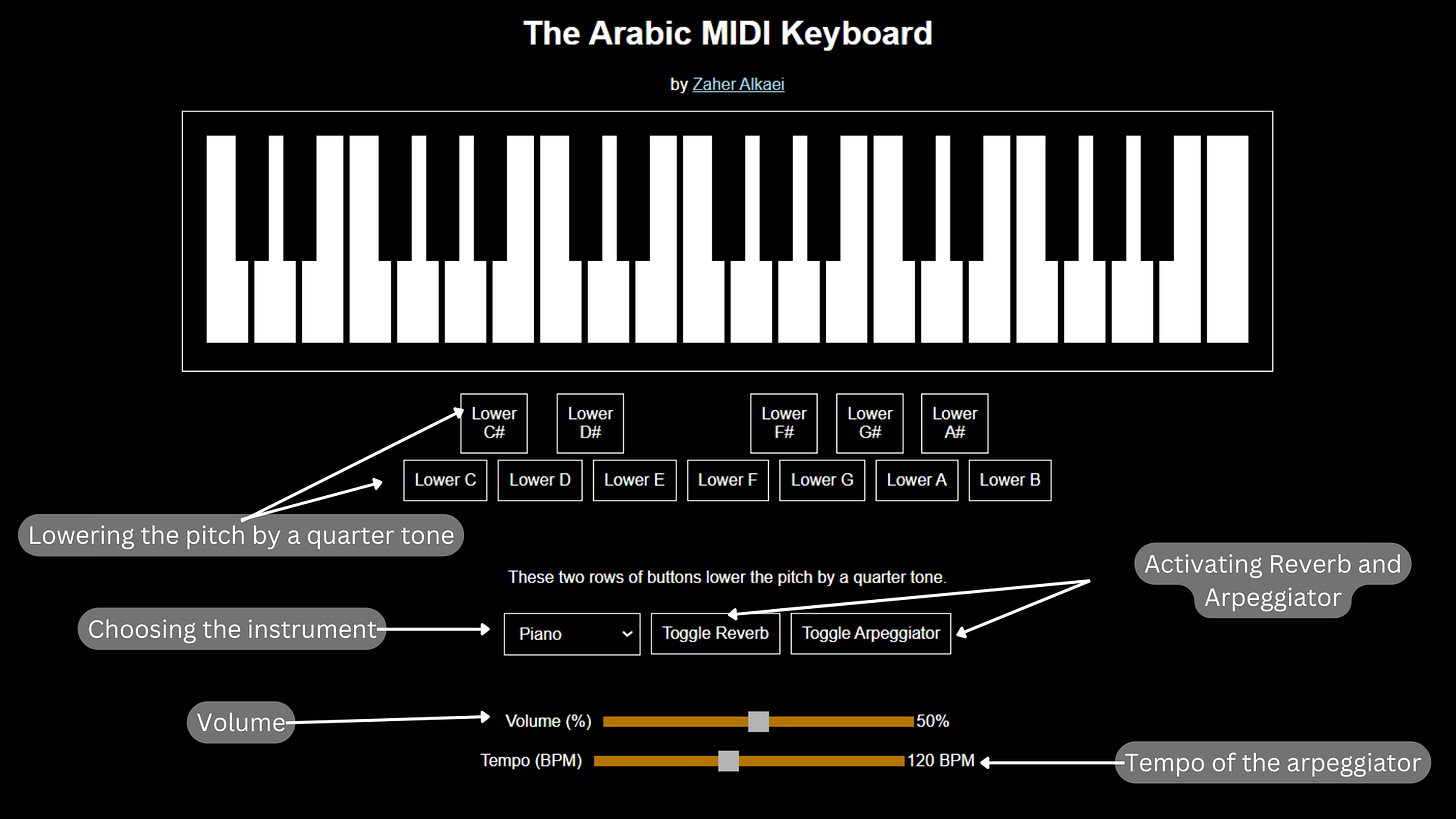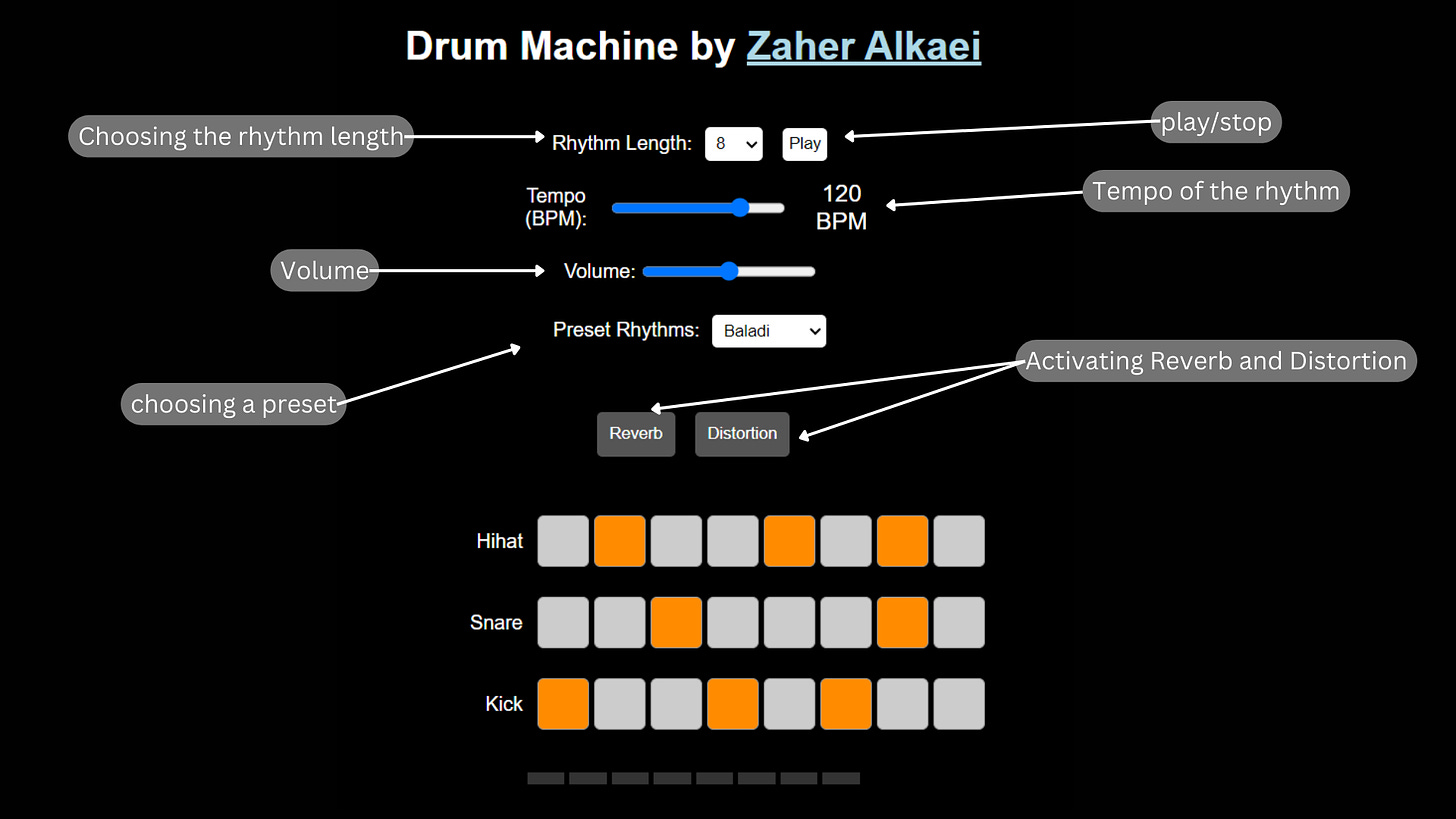Two New Free Tools for Playing and Composing Arabic Music
In the digital age you can play Arabic music in your browser
Introduction
There is no doubt that the development of musical keyboards (known as the Org in the Levant), capable of playing Arabic instruments, sounds, scales, and rhythms, has contributed to their popularity among professionals and amateurs alike. This popularity has led to the birth of new musical genres, such as Shaabi music, which is a hybrid of folkloric music played on electronic instruments (the Org) and new music with lyrics and melodies that fit various contexts (weddings, nightclubs, while working, etc.).
The relative affordability of the Org (at least the simpler models) has allowed many people to acquire and try to learn it. This instrument has served as an entry point for music education for entire groups. Its design played a crucial role in its ease of learning; the musical notes are aligned side by side, and a non-expert finger press is enough to produce a musical sound. A few buttons can change the sound, rhythm, and tempo, providing great ease compared to other instruments (such as the oud, violin, and guitar) that require months of continuous practice to produce a few modest-quality musical notes. The Org surpasses even its non-electronic predecessor, the piano, in its simplicity and ease of use, as the piano requires long practice to produce the right sounds using both hands.
Piano on the Smartphone
With the advent of the computer and smartphone era, it has become possible to play the electronic piano on a computer or smartphone screen. Electronic circuits have turned into a few lines of code. For example, the Musicca website allows users to virtually play several instruments, such as the piano and drums.
In the field of Arabic music, several developers have worked on finding technical solutions. There are applications that can simulate the sound of the oud, like the Virtual Piano website, but they do not allow playing all maqamat (Arabic music modes). Additionally, there are smartphone applications of varying quality and prices.
As a contribution to this field, I have programmed two tools to play and compose Arabic music for free through a web browser. The first tool is The Arabic MIDI Keyboard.
The Arabic MIDI Keyboard
This virtual musical keyboard can play several instruments (such as the piano, flute, and strings) and several sound effects, such as reverb. The sound quality and its similarity to real instruments are very modest due to the sound library used to produce the sounds, which does not contain real instrument sounds, but it works quickly on all modern browsers (for the code visit the GitHub rep).
The two main features of this keyboard are the ability to lower some musical pitches to play Arabic maqamat (modes/scales) that contain quarter-tone intervals, such as in the Maqam Bayati, Rast, and Sikah. Additionally, it has an arpeggiator feature, which allows the repetition of musical sequences at speeds that the user can control.
Drum Machine
The second tool is the Drum Machine, which allows for playing rhythms using Hihat, Snare, and Kick sounds and includes several ready-made rhythms. Users can play the rhythms they desire by controlling these sounds. This tool allows control over the rhythm tempo and adding two sound effects: reverb and distortion (for the code visit the GitHub rep).
Since both tools work through the browser, any number of windows can be opened to use more than one keyboard or use the Drum Machine alongside the keyboard. The following video demonstrates the capabilities of these two tools.
Conclusion
There is no doubt that these two tools are limited in terms of sound quality, but they may provide an easy and free entry point for those interested in learning maqamat or creating rhythms. Developing more complex and comprehensive programs and tools undoubtedly requires institutional work and financial support, which is rarely available.




